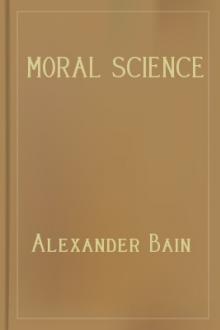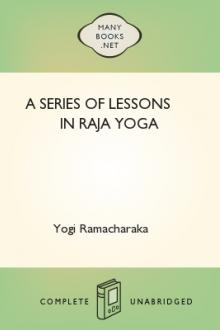Man's Fate and God's Choice, Bhimeswara Challa [best free ereader .TXT] 📗

- Author: Bhimeswara Challa
Book online «Man's Fate and God's Choice, Bhimeswara Challa [best free ereader .TXT] 📗». Author Bhimeswara Challa
Our own chrysalis, our cocoon, which is the sum of our culture and our civilization we have created and nurtured, will not let the ‘human butterfly’ to happen. We are too much of a ‘caterpillar’, perhaps more creepy and avaricious than the real one itself. Like the caterpillar that first eats the leaf it hatches on and goes after other sources, we too are ‘eating’ on the earth and searching for other planets to replicate the ravage. It is significant that the chrysalis or pupa is already formed beneath the skin of the caterpillar, and emerges in its final form as the caterpillar sheds its skin for the last time. In Nature, what is not innate or implicit cannot be even ‘transformed’. We need a fundamental change inside ourselves to bring about a transformative environment outside and to break free from our own cocoon. The ‘transformation’ we have induced is not internal but external, and that too not conducive to our spiritual growth but to pollute and poison the very environment that sustains life on earth. And the word ‘others’ which has come to signify and symbolize separateness and self- centeredness has to become a unifier. The test of transformation is how our life impacts on the lives of ‘others’. Helping ‘others’ should not be a humanitarian response; it must be a human response, not a matter of barter but for the sake of our own soul. And for any of that ‘wish list’ to become ‘natural’ to man, not a labored ‘civilized’ response, we must ‘unlearn’ many things that have seeped into our consciousness as part of our culture, and we must radically change the way we perceive ourselves and the world outside. We must unlearn to look at everything in an either/or way. We must unlearn that in every situation, one must prevail and another must yield, that alternatives are necessarily opposites. We have to nurture a mindset that looks at another person as really oneself in another body. And for that, we must change the forces that influence our perception, which, in turn, means fundamentally changing the content and character of the things that make us what we are: education, parenting, dialectics of economics, thirst for power and control, entertainment, religion, science, technology, and so on. And we must learn to look within. In her book, A Message for Humanity: The Call of God’s Angels at a Time of Global Crisis (2001), Karyn Martin-Kuri, wrote that, with our preoccupation with waging battles on multiple fronts, economic,
618 Wikipedia. Sri Aurobindo. Accessed at: http://en.wikipedia.org/wiki/Aurobindo.
619 Genece Hamby. The Human Butterfly. Accessed at: http://www.selfgrowth.com/articles/Hamby2.html
environmental and religious, we are missing the greatest battle, the most deadly one, that of the inner nature of the human being. And also that, “every time we think a negative thought or commit an act of jealousy, greed, or hatred, we hold the angels at bay. The angels want to help us, but they are powerless, except in extreme cases, unless we create an atmosphere of love and kindness within which they can intercede for us. When God gave us free will, he gave us the opportunity to determine our fate. In hearing and acting on the messages from the angels, we come closer to God.”620 To create that ‘atmosphere of love and kindness’ and to cleanse ourselves of greed, jealousy, malice, and hatred, which has been a timeless longing of the human race, nothing short of transformational catharsis will do.
All tangible human effort towards transformation is now almost exclusively scientific.
It is essentially three-pronged. One, through technologies like cryonics, science is trying to eliminate the irrevocable nature of death, to make it optional. Two, through nanotechnology, and using what are being called ‘enhancement technologies’, it is fundamentally changing the biological ‘boundaries’ of the human body; we can or, so we are told, soon will be able to, enhance the operational capacity of almost every single organ beyond the natural limits of the human species. Once that happens, everything will be transformed — the human way of life, human values, cultures, priorities, and perceptions. Three, it is hoping that through technologies like the Internet, the world will be integrated and mankind will achieve the age- old dream of universal brotherhood, and turn the conglomerate of a disparate human society into a coherent and connected community. The human species, science expects, will then be transformed into a ‘superorganism’, a term loaded with irony when we realize it does not refer to the likes of angels or gods, but to insects.
Analogy of insects. Such a contingency brings us to the third possible ‘model’ of human transformation — the world of insects. The physical transformation of an insect from one stage of its life cycle to another is called metamorphosis. Insects may undergo gradual metamorphosis, where transformation is subtle, or complete metamorphosis, where each stage of the life cycle appears quite different from the others. With more than a million species on earth, the ubiquitous insect can be found in the soil beneath our feet, in the air above our head, on and in the bodies of the plants and animals around us. They are integral and essential to life on earth. But we tend to think that we are better off without them. In our search to reorder and reorganize the human world, as a way to enhance our interdependence, scientists are turning their attention to a class of insects they call ‘social insects’, like the ants, which, it is said, make up an incredible 20 percent of the animal biomass on the planet. No mere masses of bugs, the habitats of these insects seem to be highly integrated functional units whose members communicate, cooperate, and coordinate their efforts at such activities as defending their group, searching for food, building homes, and caring for their young, much as we humans try to do. The expectation is that a future digital human society might well resemble an ant heap, a beehive, or a termite colony. Many thoughtful people have for long been captivated by the similarities — some real, some euphoric — between anthills and human societies. In the view of the biologist E.O. Wilson, ants are metaphors for men, and men for ants. Margaret Atwood, in her review of Wilson’s book Anthill (2010), says, “Though there are no symphony orchestras, secret police or schools of philosophy, both ants and men conduct wars, divide into specialized castes of workers, build cities, maintain infant nurseries and cemeteries, take slaves, practice agriculture, and indulge in occasional
620 K. Martin-Kuri. A Message for Humanity: the Call of God’s Angels at a Time of Global Crisis. 2001.
Clairview Books. East Sussex, UK.
cannibalism, though ant societies are more energetic, altruistic, and efficient than human ones”621 But the analogy of the ant is ancient and scriptural. The Book of Proverbs says, “Go to the ant; thou sluggard. Consider her ways and be wise”. The advice is to emulate the organization and industry of the ant. Thoreau, referring to ants, wrote (Walden), ‘the more you think of it; the less the difference’ between man and ant. Aristotle and Karl Marx, among others, argued that humans are social animals, and Marx wrote that, ‘each individual has no more torn himself from the navel-string of his tribe or community, than each bee has freed itself from connexion with the hive’ (Capital). According to thinkers like Peter Kropotkin (Mutual Aid: A Factor of Evolution, 1902), the pinnacle of ‘social perfection’ is occupied by ants and bees.
But the ‘perfect’ order of anthill also evokes robotic regimentation and fascist tyranny. Ants are essential to human life, but as Atwood puts it “too few ants would be a disaster; but so would too many”. While the organizational order and almost perfect division of labor in ant colonies has long been envied, modern science is trying to bring it closer home. The thesis is that the drift of human development over the past ten thousand years has been towards bigger and bigger collaborative units, consequent economic specialization, social order, and progressive interconnectedness, all of which could culminate in the emergence of a cohesive, global ‘superorganism’. In other words, through connectivity, man kindles consciousness change, which will then pave the way to a just society and transformation. By clasping the global interconnectedness that technology enables and empowers, humankind will be able to get rid of its divisive and destructive tendencies, achieve a better division of labor and synergize its energy. Critics counter and say that, unlike in ants, it is competition that distinguishes us, not only between nations and societies but also between communities, religions, and individuals. They say that we are more like plants: a seed becomes a tree and fills out available space, crowding out all competitors. Although science now embraces the ant, it is ancient wisdom that we have much to learn from the lowly and loathsome insect. As Hobbes noted, human society is driven by strive and conflict. The reason why the human world never really had a ‘communist’ society and why real socialism never had a chance is because we are governed by ‘reason’. An ant or a bee, as Dostoevsky noted, knows the formula of an anthill or a beehive respectively; only humankind does not know the formula suited to its genius. What we call the ‘human way of life’ is for every individual to incessantly seek the ‘perfect security of pleasure’ and ‘problem-free happiness’, and leave the fortunes of the community to its benevolent or malevolent fallout.
For bees and ants, the common good is indistinguishable from the individual good, and they are apparently able to live their lives in accordance with the dictum that the scriptures exhort humans to cultivate as the habit of coexistence — one for all and all for one. For man, joy consists in comparing himself and competing. Social insects lack reason and so are unaware of the fruits of their own labor and faults of their leaders. And it is hard to envision technology being able to change all that and make man behave like a bee or an ant with the kind of consciousness we have.
The Rainbow. The breathtaking beauty of the “transformation” of a raindrop into a rainbow is another ray of hope. It tells us that if we can put in place the right context, nothing is beyond the horizon of human reach, that man can be transformed to his deepest depth. The magical mystery of the rainbow has long inspired and transfixed the human imagination, and
621 Margaret Atwood. The Homer of the Ants. [Review of the book “Anthill: a Novel” by Edward O. Wilson].
The New York Review of Books, USA. 8 April 2010. p.6.
is the stuff of legend and myth in ancient cultures and religions. If nothing in Nature is an accident or redundant, what purpose does the rainbow serve and what message does it convey? Man himself has been compared to a rainbow, a mosaic of all seven colors, symbolizing his multi-faceted, multi-dimensional complexity. In Hindu mythology, the rainbow is referred to as Indradhanush or the bow of Indra, the king of gods. And in Greek mythology, it is considered as a path made by the messenger Iris between Earth and Heaven. Some ancient indigenous cultures like the Cree American Indians believed that when the world becomes completely corrupted, the earth is ravaged, the waters are blackened, when birds fall from the skies, forests are destroyed, and the air is so thick it can be touched, mankind would turn to what they called the ‘Warriors of the Rainbow’, the keepers of the legends, stories, cultures, and values of the ‘earth people’. These ‘warriors’ would go to the far corners of the world and spread love,





Comments (0)